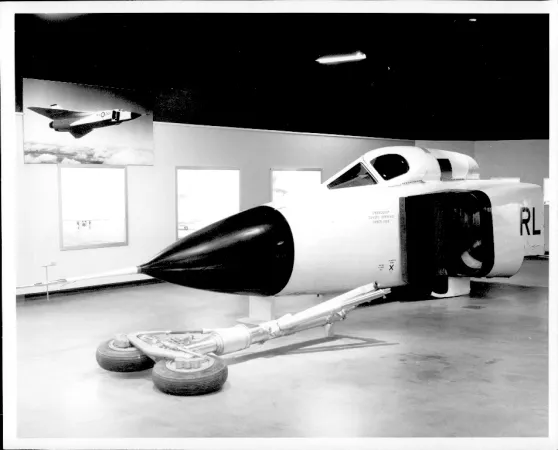Ingenium’s Digital Archives opens museum vaults to the curious
Researchers, creators, and digital citizens rejoice – the vaults have been opened!
Thanks to a new Digital Archives portal from Ingenium – Canada’s Museums of Science and Innovation, Canadians now have unprecedented access to the archives of three national museums. This means a whole new level of access to digital copies of holdings – and a look at naked catalogue records – from the Canada Agriculture and Food Museum, the Canada Aviation and Space Museum, and the Canada Science and Technology Museum.
Ingenium Digital Archives: What is it?
As the archivist working on Ingenium’s archival collections, this is big news. Through this portal, users have access to digital copies of our archival holdings and our cataloguing information for individual items. This is our effort to post new scans and to gather together the material we had previously made accessible in online web galleries, such as Picturing the Past, the CN Images of Canada Gallery, and the Canada Aviation and Space Museum Image Bank.
Neat. What can I do with it?
Unmediated access to our archives offers endless possibilities. First and foremost, users can conduct research from a distance without coming on site. Ingenium is working to make our museums and their archives a digital space – as well as a physical space located in Ottawa. Our scope is national, so we see the opening up of our digital resources as a way of reaching those who may not be able to come and visit us in person.

Thanks to the Digital Archives, a student doing a project on photograph collections could write articles on the CN Images of Canada Collection from Corner Brook, Newfoundland, or Tête Jaune Cache, British Columbia. An amateur filmmaker might look for images in the public domain for use in a film, while an entrepreneur can seek inspiration for a clothing print.

Catalog entries are marked to indicate what we believe to be in the public domain, and to indicate a license from the Creative Commons licensing scheme. Creative Commons schemes encourage people internationally to use a common language when it comes to copyright. Here at Ingenium, we also like that it focuses on what may be reused and how; this taps into the workflows of people working on the web – either casually or professionally.
Why “Open”?
Ingenium’s archives are publicly funded, so it’s part of our mandate to make our holdings available to the public. Think of our Digital Archives like the stone stelae used in ancient Greece, where the public display of official texts around the Acropolis was what gave the records their symbolic power as trusted sources of information. They were there for everyone to see! Even if you didn’t agree with what was written, you might have a better argument with your fellow citizen because the records were accessible to you both. We want you to be able to see our archives, even if you can’t see them in person like the stone stelae.
In addition to opening our vaults, the Digital Archives portal opens up our catalogue. The information for each photograph, document, and video is live data. Picture my open office door; I’m inviting people to look over my shoulder as I work with the catalogue information and digital copies that appear in the portal. Traditionally, archivists like to put out a perfect catalogue record so as to avoid any room to confusion. There is fear that a scanned item presented without sufficient contextual information may lead to misunderstandings.

Now, we’re not waiting for perfection before we post. We’re putting in some scans that we’ve made that could use a crop, or were made at a lower resolution. We’re posting scans of photographs that have no date information or strange titles. We believe there is value in providing online access to these materials, even while we continue to improve and build upon the data that’s there. For the time being you’ll see a lot of “N/A” or not applicable when we don’t have data for a field. This is misleading, of course - the missing data can be highly applicable! However, our position now is that what we have, however limited, may also be ‘applicable enough’ for a lot of people and their needs.
Access without mediation can even help to illustrate what we’re doing when we mediate or provide information not on the original record. By inviting you in my office, I’m hoping to be transparent about the work that is done – or is yet to be done – by an archivist. To start with, we want to indicate what exists. How can you ask for access to an item if you don’t know that it’s there? How will you know if there is a gap in our historical record, if you don’t know what gaps have already been filled and who has filled them? N/A? It can all be applicable, and so we’re trying to let you know what we don’t know.
Indeed, you might even help us with the work of cataloguing! If you spot something that strikes you as odd – a Fokker Universal airplane misidentified as a Fokker Super Universal, for example, or a nameless person who we should all really know by name - then we’re asking you to help. Please write to us and let us know your suggestions by using the Contact Us links. By helping us enrich the catalogue, you’ll be helping fellow Canadians and web wanderers find material that they may need.
What’s to come?
Our new Digital Archives offer up some of our most popular collections, but there is much more digitization to come. We’ll also be looking to the public to help us set our priorities for digitization, so if you have feedback we welcome you to reach out at: atorrance@ingeniumcanada.org.

































